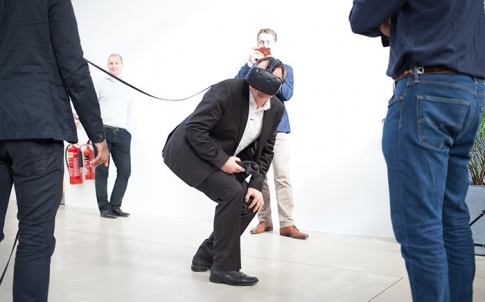
We have successfully implemented VR solutions into over 40 organisations throughout the last year, from global OEMs in the Automotive and Aerospace industries, through to universities and product design companies. What’s more, three Bombardier design consultancies have utilised our services and knowledge to develop their VR and real-time visualisation strategies. More often than not when it comes to VR in design and engineering, the question isn’t
‘How much can you make from VR?’ but is ‘How much can we save by implementing VR into a Visualisation pipeline?’.
For each organisation, the benefits of incorporating VR into a design and manufacturing workflow can vary. However, throughout our key industries, there are recurring benefits that we see our customers benefitting from immensely:
- Improved cross-division communication between Design, Engineering and Sales & Marketing.
- Avoid costly mistakes; communicating design changes to identify costly issues pre-assembly.
- Clash detection analysis software does a good job, but results are often binary simulations as they don’t accurately incorporate Human Factors, unlike VR.
- Using immersive VR, you are a part of the scene; experiencing the reviewed geometry.
- More focused and impactful training as VR helps users to retain information, compared to traditional training methods. (Also worth noting: you can’t take your headset off to read emails!)
- VR reduces the number of physical prototypes and bucks required and could eliminate the requirement completely.
- Without VR = Digital Model + Man-hours + Machine uptime + Physical material costs
- With VR= Digital Model + VR Headset
- By reducing the physical prototypes, in some cases by just one, the customer has already achieved an ROI on their VR solution. VR can not only reduce the number of physical prototypes by 50%, which results in a quicker time to market, but other benefits include valuable additional time for design refinement on the project.
- Viewing an object at its true scale is the best way to review large structures as imagery and animation can, and will never tell the true story of proportions on transport, construction or architectural VR provides those reviewing a model more confidence and improved decision making.
- Reduced travel time and cost. A well deployed VR solution will enable multiple users, on multiple locations to experience the same scene at the same time, complete with avatars of each other. Therefore, saving money on travelling for onsite design reviews or costly prototype transportation for physical reviews.
VR has come a long way from the motion sickening Google Cardboard. From solutions refined enough to analyse designs ranging from a car to a mobile phone, through to an aeroplane and superyacht. Training programmes and tours have been revolutionised by adopting a VR solution. Consider the benefits we have seen with our customers and use them to answer: How much can we save by implementing VR into a visualisation pipeline?
To discuss your VR requirements, please visit: https://www.majentasolutions.com/vr-and-ar-services/










Babcock marks next stage in submarine dismantling project
Surely on a national security project all contractors ought to be UK owned? This is similar to the life enhancement of our nuclear stations which has...